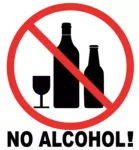
The condition is an acute form of metabolic acidosis, a condition in which there is too much acid in body fluids. They provide some energy to your cells, but too much may cause your blood to become too acidic. Alcoholic ketoacidosis is attributed to the combined effects of alcohol and starvation on glucose metabolism. If your blood glucose level is elevated, your doctor may also perform a hemoglobin A1C (HgA1C) test. This test will provide information about your sugar levels to help determine whether you have diabetes. If you develop any of these symptoms, seek emergency medical attention.
What are the symptoms of alcoholic ketoacidosis?

During starvation, there is a decrease in insulin secretion and an increase in the production of counter-regulatory hormones such as glucagon, catecholamines, cortisol, and growth hormone. Hormone-sensitive lipase is normally inhibited by insulin, and, when insulin levels fall, lipolysis is up-regulated, causing release of free fatty acids from peripheral adipose tissue. Breathing tends to become deep and rapid as the body attempts to correct the blood’s acidity. Similar symptoms in a person with alcohol use disorder may result from acute pancreatitis, methanol (wood alcohol) or ethylene glycol (antifreeze) poisoning or diabetic ketoacidosis. The doctor must exclude these other causes before diagnosing alcoholic ketoacidosis. This condition is characterized by the presence of high levels of ketones in the blood, which are acidic by-products of fat metabolism.
- When they are produced too quickly and build up in the blood, the blood becomes acidic, which causes vomiting and abdominal pain.
- Those researchers also reported that diabetics who consumed more than eight standard drinks per week developed peripheral neuropathy faster than did diabetics who consumed eight or fewer drinks per week.
- The most important consideration is finding a treatment that’s best suited to you and your individual needs and also takes into account your specific mental health or other medical concerns so you can start the path to recovery.
- Additionally, for some people with type 2 diabetes, excess alcohol can worsen dehydrating conditions and contribute to DKA.
Lifestyle Changes for Managing Alcoholic Ketoacidosis
If you chronically abuse alcohol, you probably don’t get as much nutrition as your body needs. Going on a drinking binge when your body is in a malnourished state may cause abdominal pain, nausea, or vomiting. Infection or other illnesses such as pancreatitis can also trigger alcoholic ketoacidosis in people with alcohol use disorder. During physical examination, healthcare professionals look for signs that are consistent with AKA, such as signs of dehydration and an alcoholic odor on the breath. The patient’s recent nutritional intake, particularly a history of poor oral intake or fasting, is also considered, as AKA often occurs after a period of relative starvation. Persistent vomiting and abdominal pain are common complaints that may be reported by the patient.
What Are the Symptoms of Alcoholic Ketoacidosis?
- Most importantly, insulin leads to the uptake of the sugar glucose into muscle and fat tissue and prevents glucose release from the liver, thereby lowering blood sugar levels (e.g., after a meal) (see figure).
- This is why diagnosis and subsequent treatment can sometimes be challenging, but it’s crucial to receive a proper and timely diagnosis to obtain the correct treatment.
- In the emergency department (ED), where AKA is frequently managed, patients often present with a history of alcohol use, whether acute or chronic, accompanied by symptoms such as nausea, vomiting, and abdominal pain.
- In patients with ketoacidosis, however, the liver metabolizes the incoming free fatty acids in an additional, unusual way.
Generally, the glycogen supply is depleted after 1 or 2 days of fasting. Thus, a person who has been drinking alcohol and not eating for 1 or more days has exhausted his or her glycogen supply. Numerous studies have investigated alcohol’s effects on the control of blood sugar levels in diabetics. The pancreas, which is located behind the stomach, serves two functions.


The test is free, confidential, and no personal information is needed to receive the result. It can be helpful to understand the basic guidelines for alcohol consumption so you can determine whether you are drinking above recommended levels and engaging in potentially harmful alcohol use. Your prognosis will be alcohol ketosis dangerous impacted by the severity of your alcohol use and whether or not you have liver disease. Prolonged used of alcohol can result in cirrhosis, or permanent scarring of the liver. Alcohol abuse treatment programs teach people how to move into an alcohol-free lifestyle while teaching them healthy coping strategies.
Alcohol’s Effects on Complications of Diabetes
- If your body is not producing insulin, ketone bodies will begin to build up in your bloodstream.
- Glycogen is a large molecule that consists of numerous glucose molecules and serves as a storage form of glucose in the tissues, particularly the liver.
- You should also follow all of your doctor’s recommendations to ensure proper nutrition and recovery.
- Diabetes and alcohol consumption are the two most common underlying causes of peripheral neuropathy.
- Consequently, both of the body’s mechanisms to sustain blood sugar levels are inactivated in people who consume alcohol but do not eat, resulting in profound hypoglycemia.
- Additionally, it has been found that episodes of AKA are often triggered by a lack of oral nutrition over a period ranging from one to three days, particularly in individuals with a history of alcohol use disorder (AUD).
Moreover, heavy drinking in a fasting state can cause hypoglycemia and ultimately increase diabetics’ risk of death from noncardiovascular causes. Cardiovascular disease continues to be one of the leading causes of death among all Americans and is the leading cause of death in people with type 2 diabetes (Bierman 1992). The relationship of alcohol consumption to cardiovascular disease in diabetic people has not been well evaluated.
Possible Complications
Alcoholic Ketoacidosis Symptoms


